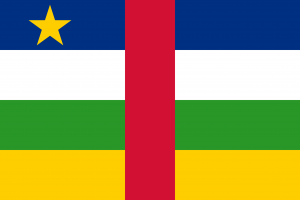Language/Sango/Grammar/How-to-Use-Have
Hi Sango learners! 😊
In this lesson, we will learn how to use the verb "have" in Sango. We will look at the different forms of the verb and how to use it in sentences.
Introduction
The verb "have" is used to express possession or ownership. It is also used to express relationships between people. In Sango, the verb "have" is conjugated differently depending on the subject of the sentence.
Conjugation
The verb "have" is conjugated differently depending on the subject of the sentence. Here are the conjugations for the verb "have":
| Subject | Sango | Pronunciation | English Translation |
|---|---|---|---|
| I | mɔgɔ | moh-goh | have |
| You (singular) | wɔgɔ | woh-goh | have |
| He/She/It | a gɔ | ah goh | has |
| We | mɔgɔw | moh-goh-woh | have |
| You (plural) | wɔgɔw | woh-goh-woh | have |
| They | a gɔw | ah goh-woh | have |
Examples
Here are some examples of how to use the verb "have" in Sango:
- Person 1: Mɔgɔ bɛɛ? (Do you have?)
- Person 2: Ee, mɔgɔ. (Yes, I have.)
- Person 1: Wɔgɔ bɛɛ? (Do you have?)
- Person 2: Ee, wɔgɔ. (Yes, you have.)
- Person 1: A gɔ bɛɛ? (Does he/she/it have?)
- Person 2: Ee, a gɔ. (Yes, he/she/it has.)
- Person 1: Mɔgɔw bɛɛ? (Do we have?)
- Person 2: Ee, mɔgɔw. (Yes, we have.)
- Person 1: Wɔgɔw bɛɛ? (Do you have?)
- Person 2: Ee, wɔgɔw. (Yes, you have.)
- Person 1: A gɔw bɛɛ? (Do they have?)
- Person 2: Ee, a gɔw. (Yes, they have.)
Conclusion
In this lesson, we learned how to use the verb "have" in Sango. We looked at the different conjugations of the verb and how to use it in sentences. To improve your Sango Grammar, you can also use the Polyglot Club website. Find native speakers and ask them any questions!
➡ If you have any questions, please ask them in the comments section below.
➡ Feel free to edit this wiki page if you think it can be improved. 😎

